Advertisement
Andris Nelsons, The BSO And The Age Factor
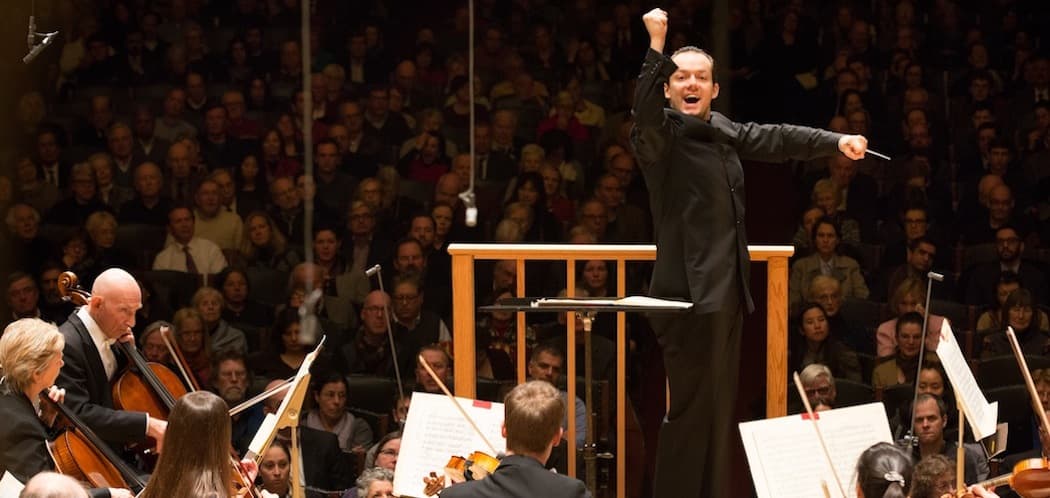
Andris Nelsons is certainly still in the honeymoon period of his directorship of the Boston Symphony Orchestra. The first of his four remaining programs for his relatively abbreviated season (he has many previous commitments) went about 20 minutes longer than the program booklet said it would, on a ferociously cold night when folks were probably eager to get home as early as possible. But most people stayed to offer their warm applause as Nelsons offered bow after bow to deserving players.
Maybe if more subscribers had seen an interview that appeared last summer in the leading German newspaper Die Welt, in which he was not especially flattering to his new orchestra, they might be a little more restrained about taking him to their hearts.
“Yes, I feel too young in 2018 to take over the Berlin Philharmonic as the successor to Simon Rattle,” he is quoted as saying. “Therefore, it was of course a strategic decision and also a signal when I decided in May 2013 to be, this fall, the new chief conductor of the Boston Symphony Orchestra.” Too young for Berlin (he’s 36), but old enough for Boston? He’s done several particularly impressive performances here of Russian music (Tchaikovsky’s "Pathétique" Symphony, Sofia Gubaidulina’s "Offertorium," Rachmaninoff’s "The Bells"). Yet the more I hear him, the more I question his readiness for the BSO.
His concerts for the weekend of Jan. 8-10 featured a “safe” program of familiar classics: Brahms’s "Variations on a Theme of Haydn," Haydn’s 90th Symphony in C major (a rarity at Symphony Hall but a piece Nelsons has been performing elsewhere) and Richard Strauss’s "Don Quixote," featuring French cellist Gautier Capuçon portraying the deranged knight errant and BSO principal violist Steven Ansell as the chattery, homiletic Sancho Panza. The evening was not the success it should have been and reinforced one’s sense of Nelsons’ limitations rather than his gifts.
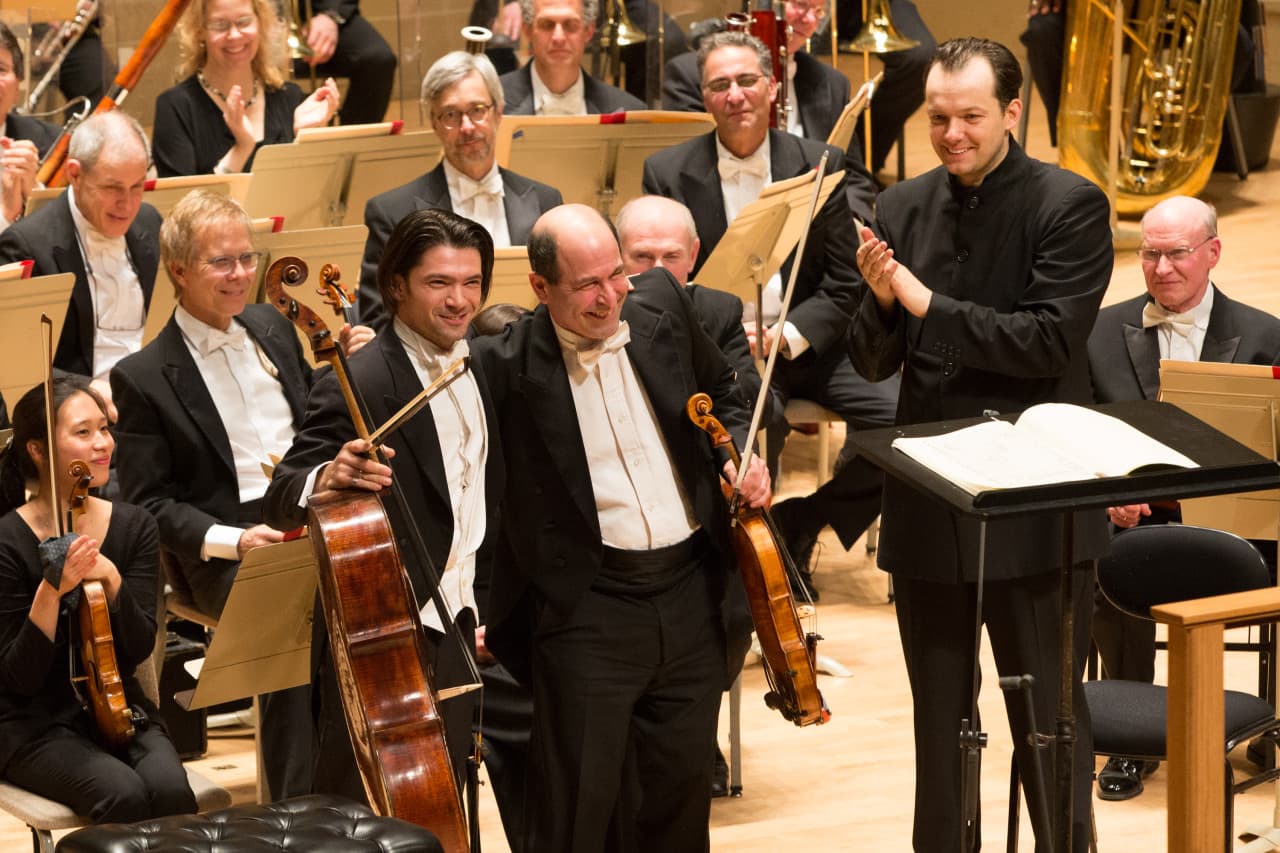
The Brahms began well — lively enough — but by the fourth of the eight variations it began to run out of steam. Instead of adding brilliance to brilliance and building up to Brahms’ exciting finale, the piece got more and more sluggish, even muddy by the end. Where was Brahms’ inner fire? The Haydn Symphony, which also has a variations movement, was a notch better. Haydn’s famous sense of humor arrives in a “gotcha” moment in the last movement, when he seems to end the symphony on a conclusive cadence followed by a long pause. But then he keeps going. Nelsons looked at the score with a big double take, which got a laugh. The several flute solos were ravishingly articulated by Elizabeth Rowe. It’s a treat to hear unfamiliar Haydn at the BSO, but this symphony never quite had the sparkle of the best Haydn performances — Sir Thomas Beecham, Leonard Bernstein, Otto Klemperer (though I don’t think any of them recorded this symphony).
Strauss is a Nelsons specialty, so "Don Quixote" ought to have been the high point of the program. This tone poem is also a series of variations. Themes keep recurring in different guises: Don Q’s idealism, his vision of Dulcinea, Sancho’s babbling. And there are delicious sound effects: the Don thinking that he’s flying (thanks to a wind machine), the bleating sheep he thinks are an enemy army. All these were vividly present. But tempos dragged. And the piece seemed more compelling in sections than as a whole.
Capuçon is an elegant player, but from where I was sitting in row R, I couldn’t hear him during the ensembles. This is a built in problem with any piece for cello and orchestra, so a conductor needs to be especially wary. Capuçon’s Gofriller had warmth and depth in the solo passages, and he “acted” the part well. And yet, when I’ve heard Yo-Yo Ma play the Don, or Lynn Harrell (under Levine), his death scene, with its downward cello slide disappearing into a void, has been heartbreaking. With Capuçon, the death of the Don was almost too well-played, too calculated and self-conscious, to be moving. On the other hand, violist Ansell, who excels as Sancho Panza, gave one of his gutsiest, most characterful performances.
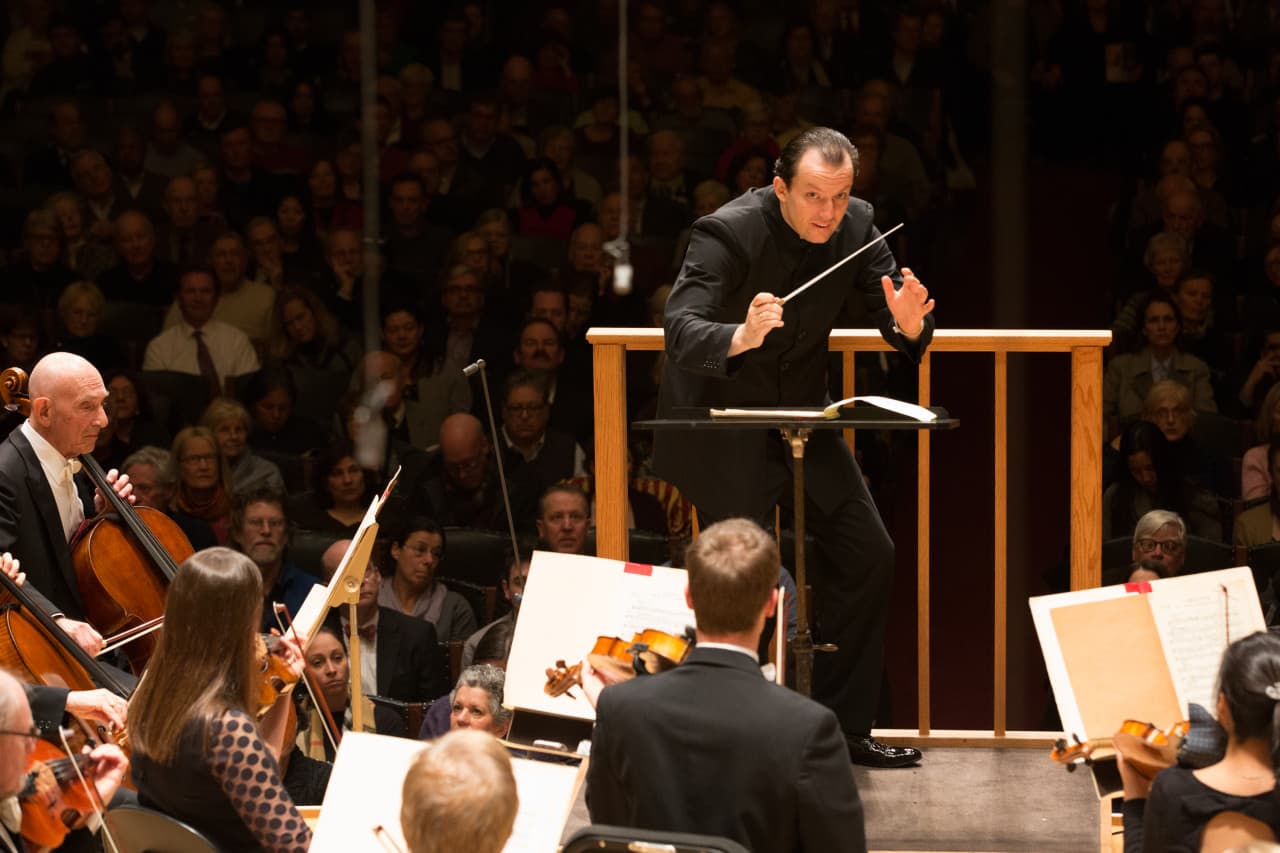
Nelsons has a repertoire of gestures that has already begun to crystalize: he frequently rests his left hand on the podium rail behind him and conducts with only his right hand; he crosses his legs; he lunges forward (Alex Ross in The New Yorker labeled this motion “the Trapeze Grab” and “the Across-the-Table Ice-Cream-Scoop”); his hands fly aloft at climaxes (especially one involving trumpets); he crouches way down to quiet the orchestra; he jiggles his fingers on each trill. Sometimes he seems to be reacting to the orchestra instead of actually telling it what to do. This time I noticed something I hadn’t taken in before. With amazing sleight of hand he slips his baton from one hand to the other. See it in his right hand? Suddenly, it’s not there — he’s just waving his empty hand (gracefully, like a ballet dancer) and he’s holding the baton is in his left hand. Then suddenly it’s back where it started. It’s magic!
This month there’s a multimedia Nelsons display at Symphony Hall, free and open to the public during the day on Tuesdays, Thursdays and Saturdays and to concertgoers at night. This features his marked up score of Tchaikovsky’s Fifth Symphony, a trivia quiz and four video monitors showing clips from various Nelsons events and interviews and from a DVD called "Genius on Fire." In a makeshift little theater, a life-sized hologram of Nelsons talks about his values — how we need doctors and dentists to take care of our bodies but music is food for the soul. It’s probably not telling BSO patrons anything they don’t already know. (Wouldn’t it be more interesting — and more useful — for him to talk about the kind of music he likes and why? Or about the art of conducting? Something less about personality than musicianship?)
He repeated some of the same spiel speaking to the audience before his performance of the Bruckner "Symphony No. 7" at the next week’s concert. How his discovery of Wagner at the age of 5 was medicine for his soul. How this was the first step on his Bruckner “journey” with the BSO — that there’ll be a new Bruckner symphony each season. How he’d “infected” the orchestra with Bruckner and hoped to “infect” the audience as well (James Levine, his predecessor, left Bruckner to others).
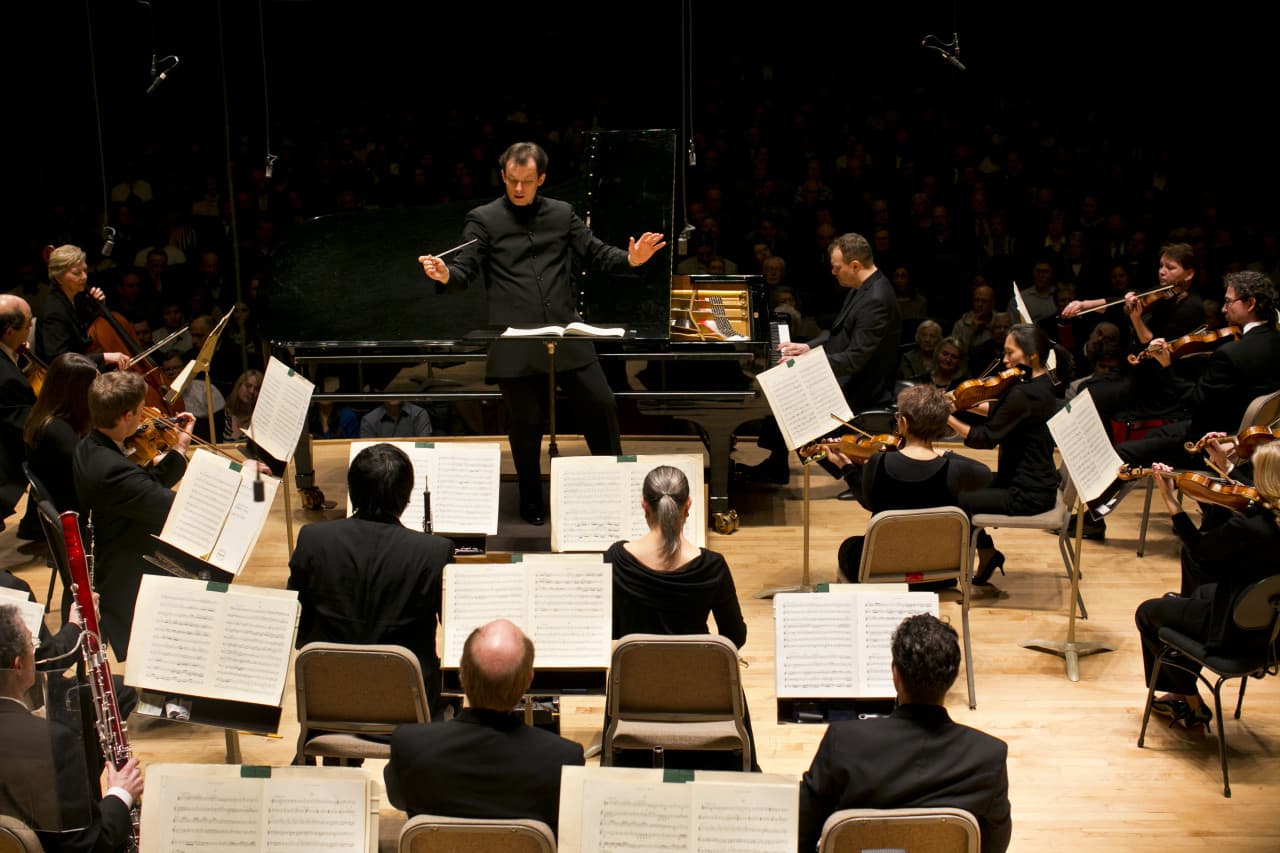
Nelsons delivered a noble if not completely satisfying performance: strong, but lacking the deep understanding of Klaus Tennstedt, the powerful forward thrust of Benjamin Zander, or the chamber music intricacy of Leon Kirchner — my best live experiences with Bruckner. The opening theme in the cellos ought to well up from the depths and carry you away. Here it was lovely, but hardly visceral. There was less of Nelsons’ micromanagement, a little more sweep, yet Bruckner’s frequent shifts of tempo remained under-inflected, smoothed-out, and except where Bruckner already punctuates these transitions with big pauses, Nelsons didn’t help us hear any underlying motive behind these continual changes. Instead of one tempo triggering a new one, or ricocheting off the previous one, there were merely arbitrary and uneventful alternations in speed. So this very long symphony felt even longer, flatter, less energized from moment to moment. If Bruckner’s “cathedrals of sound” are made up of massive building blocks, the blocks here seemed made of something softer and rounder.
There’s an old controversy about Bruckner’s late addition (and possible deletion) of cymbals and tingling triangle to cap the huge climax of the Adagio movement. Most scholars (like BSO program annotator Michael Steinberg) and conductors prefer these additions. But Nelsons chose to omit them, so there was something anti-climactic about this climax. “I didn’t feel closer to God,” a friend wrote me. Nelsons seemed more comfortable with the lively, kaleidoscopic shorter episodes of the finale.
Still, the playing was magnificent: the four solemn Wagner tubas lamenting Wagner’s death; the depth of the strings; the glittering winds—Elizabeth Rowe’s seductive flute threading the whole symphony, John Ferrillo’s eloquent oboe, James Sommerville’s imposing horn, Thomas Martin’s warm clarinet.
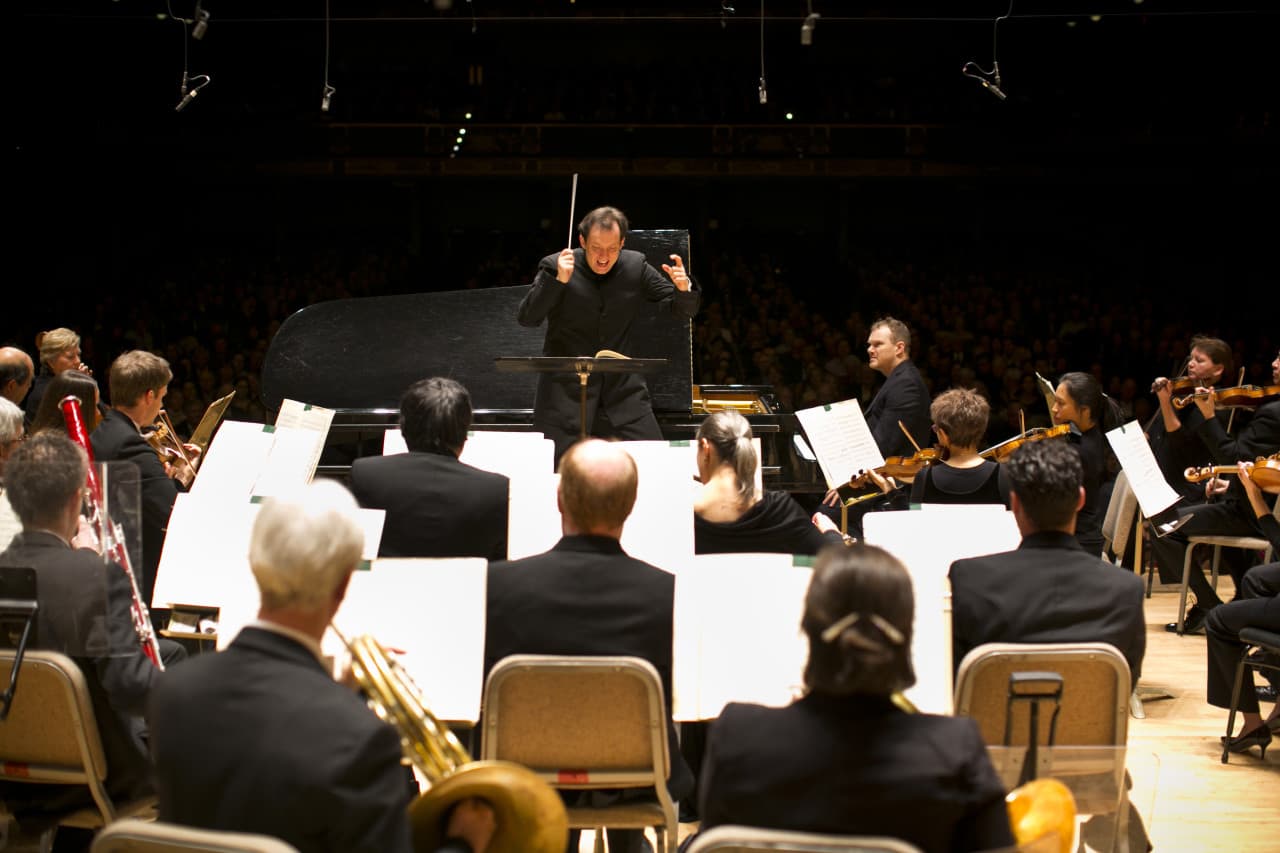
In the wrenching Mozart C-minor Concerto that preceded the Bruckner, with a mostly different set of woodwind players (an inflexible and noisy oboe), some of Mozart’s most exquisite music for winds seemed to be the product of a lesser orchestra. German pianist Lars Vogt has a lovely, rippling touch. Disregarding the metronome, he phrased the poignant opening theme as a searching internal monologue. Elsewhere he seemed less engaged. And there was little connection between movements. Mozart’s achingly slow Largo sounded more like an Andante, losing Mozart’s profound pathos in the process of the speeding up; while the last movement was too slow for Mozart’s potentially ferocious Vivace. Mozart’s great piano concertos may be a lot shorter than Bruckner symphonies, but they demand more intellectual nuance and emotional insight, not just stamina. In this concert, Nelsons seemed readier for Bruckner than for Mozart.
(Andris Nelsons returns to the BSO March 26 for a program featuring a new work by Michael Gandolfi and Mahler’s "Sixth Symphony.")
Lloyd Schwartz is classical music critic for NPR’s "Fresh Air," senior editor of classical music for New York Arts (www.newyorkarts.net) and Frederick S. Troy Professor of English at the University of Massachusetts Boston. For his reviews in The Boston Phoenix, he was awarded the Pulitzer Prize for Criticism. Follow him on Twitter @LloydSchwartz.
Related: "The BSO's Andris Nelson: Maestro of 'Emotionality'" from Radio Open Source.